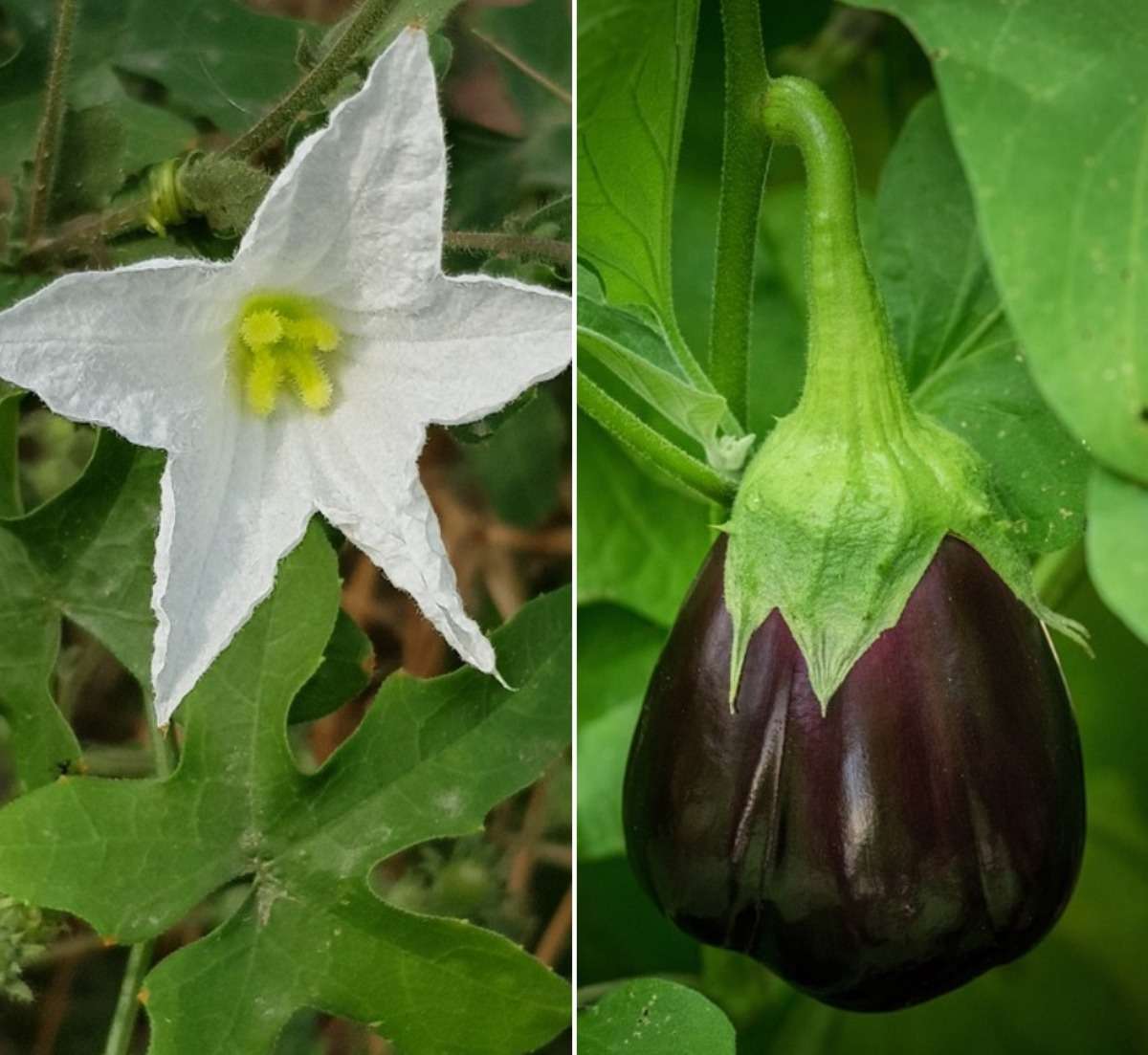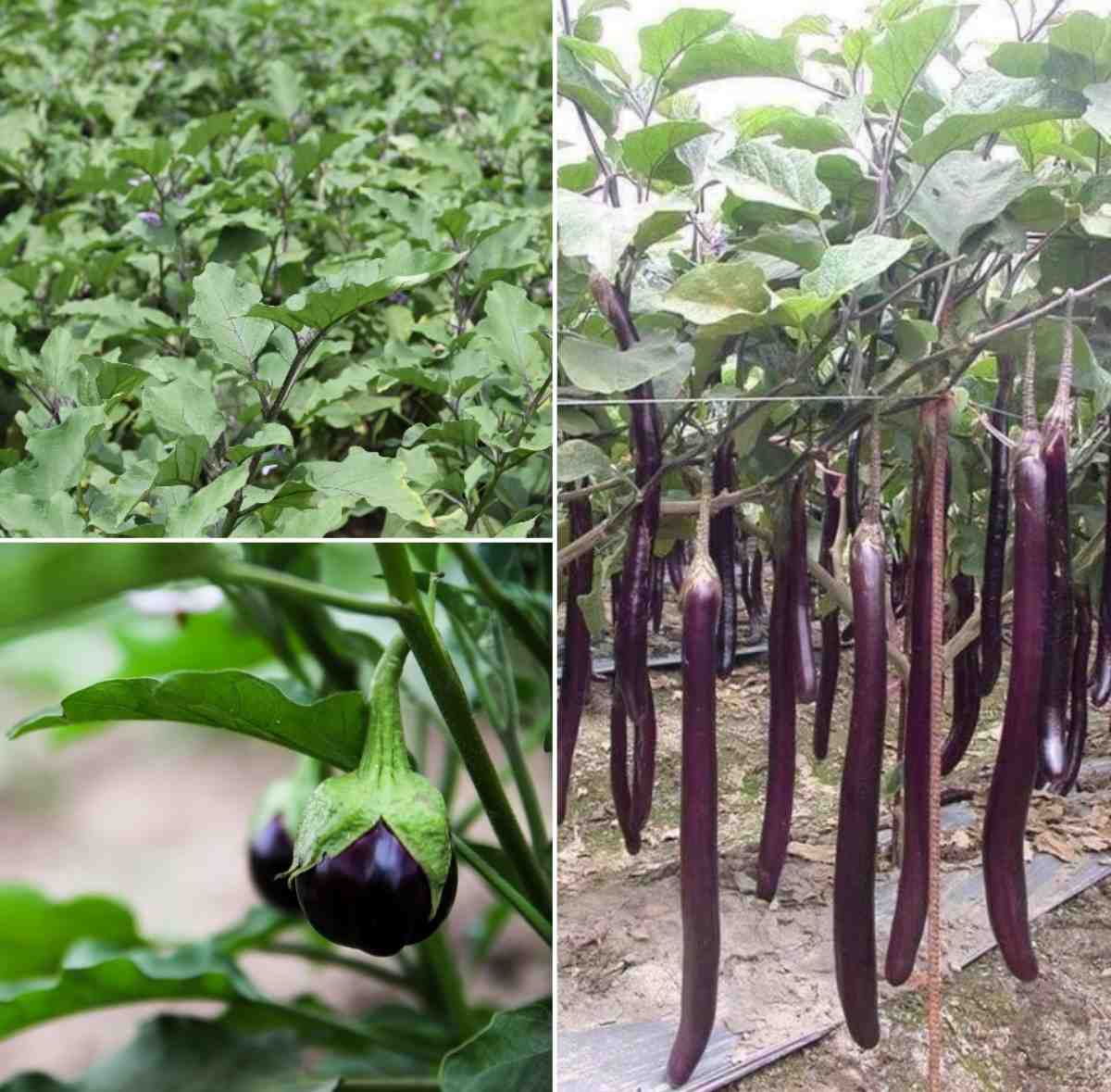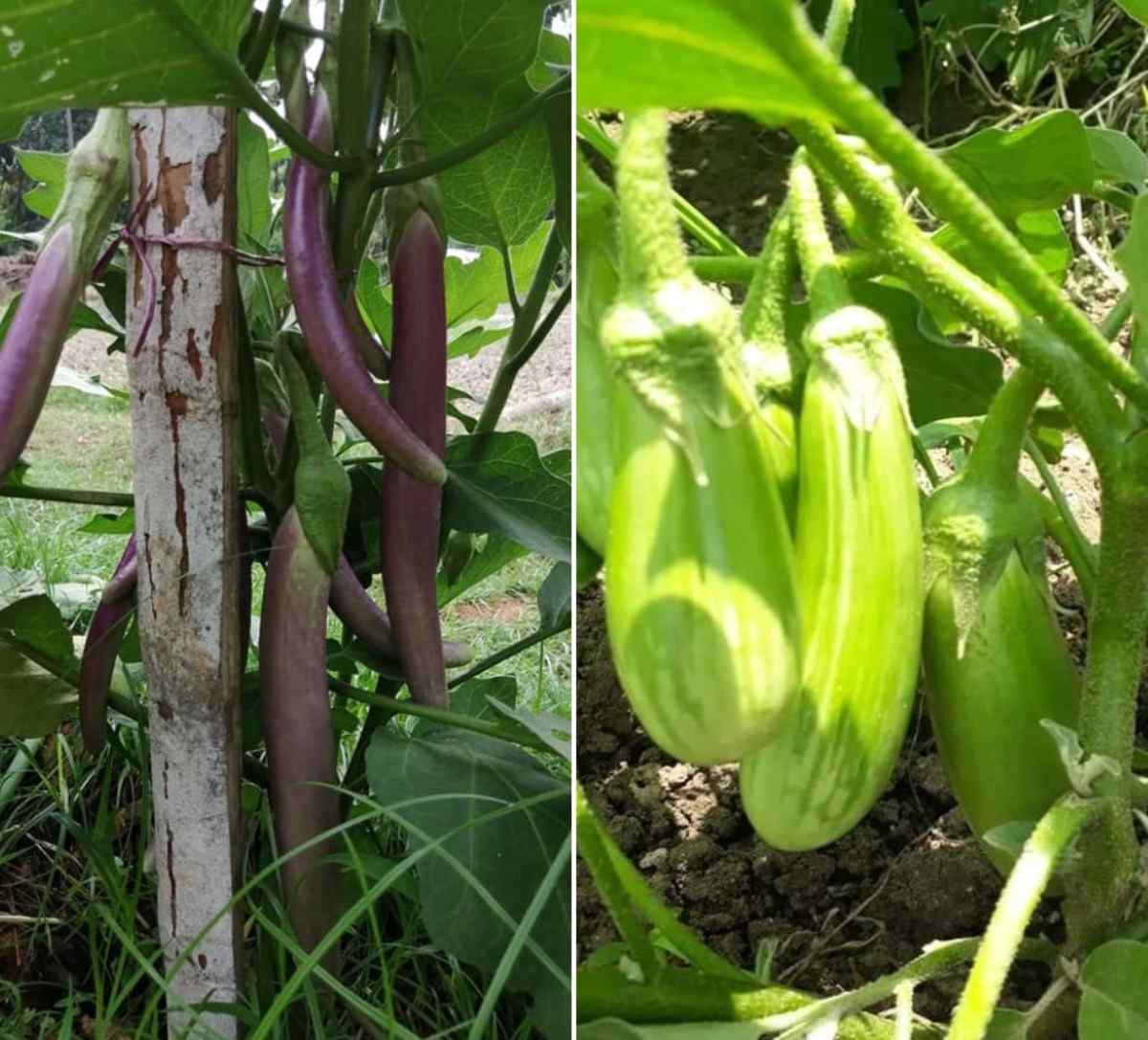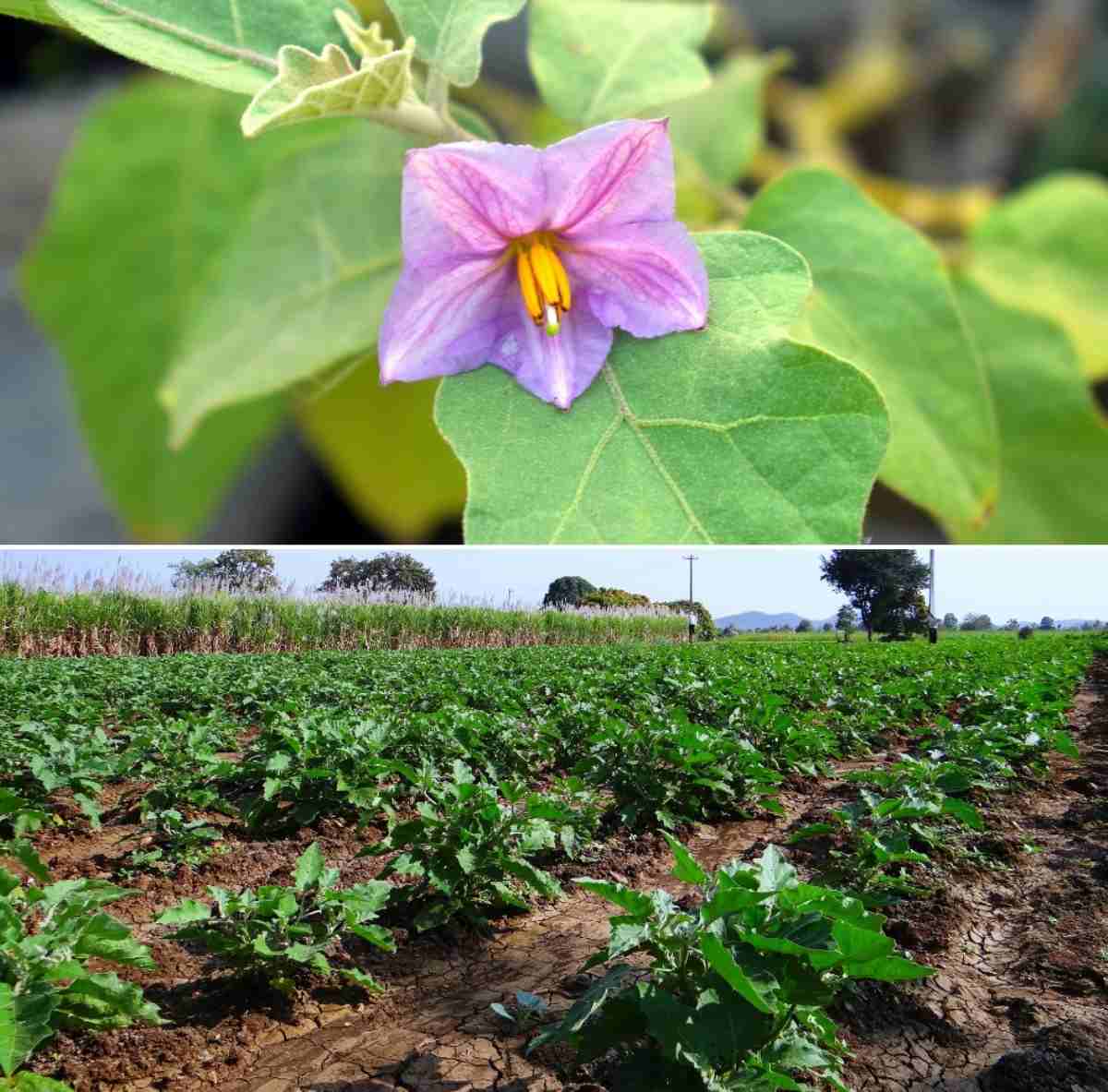Eggplant flower drop causes and prevention
Eggplant is also called Brinjal, is an important solanaceous crop. In India, it is one of the most common and popular vegetable crops grown throughout the country except for higher altitudes. Eggplant is a versatile crop adapted to different agro-climatic regions and can be grown throughout the year. It is a perennial crop but grown commercially as an annual crop. Several Eggplant cultivars are grown in India, consumer preference being dependent upon fruit color, size, and shape. Eggplants have increased in popularity in the garden in the past several years. Many gardeners who grow this Eggplant vegetable have been frustrated when an Eggplant has flowers but no fruit because the Eggplant flowers fall off the plant.
A step by step guide to Eggplant flower drop reasons and solutions
Eggplant is a member of the Solanaceae or nightshade family, which also includes tomatoes, potatoes, and peppers. Eggplant is a frost-tender, heat-loving, branching bushy plant with thick, and woody stems. The green to grayish-green leaves is large, lobed, and alternate with the underside normally covered with spiny fuzz. Mature Brinjal plants range from 1 to 8 feet in height. Eggplant flowers are star-shaped in various shades of purple and usually form on opposite leaves as solitary blooms or grouped in clusters of two or more. They are perfect and mainly self-pollinating. Though, some cross-pollination can occur with the help of bees, ants, and other insects. Flowering is thought to be day-neutral and, not dependent on a specific number of daylight hours.

Eggplant flowers – Once the Eggplant reaches the mature stage, purple, and star-shaped flowers appear. These Eggplant flowers are self-pollinating with both the male and female organs in each flower. Then, the fruit develops from the female part of the flower.
Fruit – Depending on the Eggplant variety, the fruit can be purple, white, and striped. Eggplants produce purple fruit that grows about 7 to 10 inches when mature. Different Eggplant cultivars bear fruit in about 50 to 80 days.
Soil condition for Eggplant cultivation
Eggplants require well-drained soil, rich in nitrogen, and phosphorous for optimal growth. If your soil lacks any of these conditions, Eggplants will grow foliage, but not bear any fruit. Spread compost or manure in the garden to add nutrients to the soil.
In case if you miss this: Moringa Seed Germination Procedure, Spacing, Yield.

Eggplant is very easy to grow in the low desert southwest. It does well in a variety of soil textures but prefers rich, well-drained soil with a pH level of 5.5 to 6.5. It thrives in full sun and requires at least 5 months of warm weather for fruit production.
Conditions required for Eggplant cultivation
- Lack of sunlight causes stunted growth in Eggplants and they need full sun, all day long. If the garden doesn’t provide full sun, consider planting Eggplant in containers that you can move into sunny areas.
- Eggplant germination temperatures range from 21°F to 32°F, so it is important to keep the soil warm. You can need to provide bottom heat and cover the flats or pots to maintain soil temperatures.
- Adequate moisture is essential to seed germination. Try misting, rather than watering, to maintain soil moisture and keep seeds from washing away or becoming too deeply buried. Once seedlings emerge, continue to keep the soil warm, moist, but not soggy.
- Eggplant is a heavy feeder crop. Therefore a balance application of manure and fertilizers is important for successful crop production. Further, the Eggplant being a long duration crop requires a good amount of manure and fertilizers. Well, rotten farmyard manure or compost (200-250 q/ha) must be incorporated at the time of field preparation.
- The time of sowing of Eggplant seed and transplanting of seedlings varies according to the agro-climatic regions. Transplant seedlings into prepared garden beds, spacing plants about 18 to 24 inches from each other, in rows 30 to 36 inches apart.
- Irrigation of the field as per the need of Eggplant crop. Timely irrigation is essential for good growth, flowering, fruit set, and fruit development. A higher yield can be obtained at optimum moisture levels and soil fertility conditions. In plains, irrigation must be applied every third to the fourth day during hot weather and every 7 to12 days during winter.
- To avoid Eggplant flower and fruit drop, water deeply and regularly, especially during long, dry periods.

Several reasons for Eggplants flower drop and prevention
Even one of the following reasons can prevent Eggplants from producing fruit. Many times, Eggplants increase large flowers, only to have them drop off for no apparent reason. If you determine which of the following issues is damaging Eggplants, you can take measures to solve the problem.
- Not enough water
- Insufficient pollination
- Weather conditions
- Fertilizing requirement
- Sun protection
- Nutrient Deficiencies
- High temperatures over 32°C
Watering
Eggplants require sufficient water to grow successfully. They require deep and consistent watering, that can reach at least 18 inches into the soil. If water reaches the first few inches, it results in flower drop. Even the Eggplant fruit will fall off, if not watered enough. Applying up to a 3-inch layer of mulch around Eggplants keeps the soil moist, and prevents sun damage to the foliage on hot days.
Pollinating
Eggplant flowers have both male and female organs in each blossom, and which makes them self-pollinating. Usually, the wind or insects carry the pollen from the male to the female part of the flower, but sometimes they require a little help. Gently shaking or tapping the Eggplant loosens the pollen, transferring it from the male to the female. The female part of the Eggplant flower is where the fruit forms. You can use a small paintbrush to transfer the pollen. Just swirling the brush around inside the flower must do the trick.
You may also check this: Organic Beans Cultivation Practices, Farming Methods.
Weather conditions
Eggplants like sunny and hot, but not too hot. When weather conditions and sunlight aren’t just right, flower buds can drop off the Eggplant or never form at all. Eggplants that don’t receive at least 6 hours of sunlight a day can suffer reduced blossoming and fruit set or produce small fruit. Waiting to plant seedlings outdoors until nighttime temperature ranges are consistently higher than 15°C helps the plant produce more blossoms and hold onto those that do develop. Eggplant blossom and fruit production slow when temperatures stay above 23°C overnight. Where summers get hot by the end of the season or are cool early in the spring, shortening the growing season, plant a variety that is known to be early bearing, for example, “Early Bird.”
Fertilizing
Spreading organic fertilizer, such as cow, horse or poultry manure adds the nutrients Eggplants crave back into your soil. Manure provides nitrogen that Eggplants want to produce protein for growth. If your soil lacks nitrogen, Eggplant leaves will turn yellow. Organic fertilizer adds phosphorous, which plants need to form healthy roots, and flowers that produce fruit.
Sun protection
When the temperature in your area rises above 32°C, cover Eggplants with a shade cloth. This will protect them from sun scorch. If you planted Eggplants in containers, just move them to a shady area until the temperature drops below 29°C.
Nutrient deficiencies
Lush plants give you high hopes for a large harvest, but leaves may be all you get from Eggplant if the soil has too much nitrogen and not enough phosphorus. A soil test before planting is always a smart idea, but if you’re already midway through the season, then hold off on additional high-nitrogen fertilizer. An application of ammonium phosphate worked into the soil around the Eggplants at a rate of about 2 pounds per 100 square feet can make more phosphorus available to the Eggplants for blossom production. Once the plant does set buds, spritzing its foliage with a solution of about 1 teaspoon of Epsom salts per gallon of water can give the plant extra magnesium and calcium to help it hold onto blossoms.
Temperature range
The optimum daytime Eggplant growing temperature ranges are 21 and 29°C. When temperatures rise above 35°F, Eggplant ceases to set fruit and can drop flowers or abort immature fruit. Fruit set is reduced when temperatures fall below 15°C.
Eggplant blossoms drying out from lack of water
When an Eggplant plant is stressed, its blossoms will dry up and drop off without producing Eggplant fruit. The common reason an Eggplant gets stressed is due to a lack of water. Your Eggplant needs at least 2 inches of water a week, more in hot weather.
You should not miss this: Lemon Flower and Fruit Drop, Causes, Control Methods.
The majority of that water must be provided in one watering so the water goes deeper into the ground and is less likely to evaporate quickly. Deep watering encourages the Eggplant to grow deep roots, which helps it find water deeper in the ground and even out its water needs so it is less likely to drop a single Eggplant flower.
Pollination of Eggplant flowers
Although Eggplant flowers are self-pollinating, bumblebees and other insects pollinate the flowers. Eggplants pollinated by bumblebees produced 23% more fruit than self-pollinated plants. And other insects that pollinate Eggplants are ants, thrips, and flies. There was no difference in the Eggplant fruit quality, no matter which way the pollination took place. When Eggplant flowers self-pollinate, it’s generally caused by vibrations produced by the wind, rain, or shaking the plant by hand.
Every Eggplant flower has male and female organs that self-pollinate to produce the Eggplant fruit. Bees and wind mainly help the flowers to transfer the pollen from the male to the female. If Eggplants aren’t growing, you can help pollinate the flowers by tapping on the plants to spread the pollen. You can use a paintbrush to aid in pollination.
Once Eggplants have the correct growing conditions, including moist, nutrient-rich soil, temperatures of 21°C to 29°C, and companion plants that repel pests, your garden produce plenty of tenders, well-formed Eggplants.
Problems with Eggplant flowers
Your Eggplant flowers drop off the plant if they’re not getting enough water, or pollination hasn’t occurred. Insufficient water results in dried flowers that drop. You can prevent this by watering your Eggplants at least once per week with a good soaking that reaches 6 inches into the soil. This also helps the roots of your Eggplants to grow deeper into the soil where it stays moist.
The other factor that causes Eggplant flower drop is lack of pollination. During dry, hot weather, pollen becomes inactive, so pollination doesn’t take place, and the Eggplant flower falls. If you think this is the problem with flowers, you can help pollination along by gently shaking each plant, transferring the pollen from the male to female parts of the flower.
How to prevent Eggplant flower drop
- Home gardeners can start the plants from plant seedlings from nurseries outdoors or seeds indoors, after all, the danger of frost passes, and the soil temperature reaches at least 65°C. Proper soil moisture, sufficient sunlight, and warmth encourage healthy growth and fruit production while preventing premature blossom drop.
- Select a garden bed to grow Eggplant seedlings that receive at least 8 hours of full sun each day and has well-drained soil. Spread about 1/3 pound of 12-12-12 fertilizer over every 10 square feet of the garden bed. Use a spade to work the fertilizer into the soil’s top 8 to 12 inches, carefully incorporating it into the bed and breaking up large soil clumps.
- Dig planting holes in the same depth as the seedling pots. Space the holes about 1 to 2 feet apart in each row, and make the rows 3 feet apart. Lift the Eggplants from their pots, and plant in the holes so they are at the same depth in the holes that they grew in their pots. Fill the remainder of each hole with soil.
- Water the Eggplants deeply one or two times in every week, supplying up to 2 inches of moisture through irrigation or rainfall, or enough to keep the top 1 foot of soil moist. Eggplants have deep roots, and soil that isn’t kept moist can result in poor blossoming, blossom drop, and poor fruiting.
- Spread a 2-inch thick layer of straw, wood chips or other organic mulch over the soil surface. Don’t allow the mulch to touch the Eggplant stems as it can cause the stems to rot. The mulch will help to keep moisture and insulate the soil against temperature fluctuations.
- Insert wood stakes on the north side of the Eggplant rows and staple white butcher paper to the stakes. The paper will reflect sunlight onto the plants, ensuring the Eggplants receive enough warmth and light to prevent blossom drop.
- Then, apply nitrogen fertilizer when the Eggplants begin to flower. Use the good amount of fertilizer recommended on the fertilizer package; the amount to use varies with the fertilizer’s nitrogen content. Apply the fertilizer between the Eggplants so it doesn’t come in direct contact with stems or foliage. Water the site immediately so the fertilizer can dissolve and then soak into the soil.
- Eggplant fruits harvest as soon as they ripen. Fully mature Eggplant fruits are full size and develop a glossy sheen. Eggplants continue to flower and produce fruits until the average air temperature drops below 18°C.
Commonly asked questions about Eggplant flower drop

How long after flowering does Eggplant appear?
The Eggplant fruit develops from the female part of the flower. Depending on the Eggplant variety, the Eggplant fruit can be purple, white, or striped. Most Eggplants produce purple fruit that grows from about 7 to 10 inches when mature. Different cultivars bear fruit in 50 to 80 days.
Are Eggplant flowers self-pollinating?
Eggplants are referred to as “perfect pollinators” because they self-pollinate within the same flower. If you notice that Eggplant yields are low or that flowers are withering and falling off without producing Eggplant buds, then you could need to hand-pollinate
How often should Eggplant be watered?
In hot climates, young plants will want to be watered twice a week, to a depth of 12 inches. Eggplants do not like standing water, so mature plants must be watered deeply and infrequently. But do not allow the plant leaves to wilt during the day.
How do I know when to pick my Eggplant?
Skin must be glossy and thin. Eggplant harvest can begin when the fruits are developed and small, but growing fruits to full size before harvesting Eggplants results in more fruit for usage. Harvesting Eggplants occur when the inner flesh is cream-colored; fruits are firm and before seeds are visible.
Why are my Eggplants turning white?
One of the main causes of white Eggplant turning yellow color is allowing it to grow too long. Overripe Eggplant results in mushy flesh and also bitter flavor. Flea beetles are one of the most common Eggplant pests that destroy Eggplant seedlings and foliage on mature Eggplants.
Why is my Eggplant turning white?
If there are white, powdery spots on the leaves of Eggplants, your plant may have powdery mildew. These spots gradually spread over a large area of the plant leaves and stems. Leaves infected with powdery mildew can distort or gradually turn completely yellow, die, and fall off, which may expose fruit to sunburn.
Conclusion of Eggplant flower drop
You must take appropriate measures to control the Eggplant flower drop for better crop yield. You may also check Coriander Seed Germination, Time, Process.